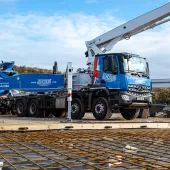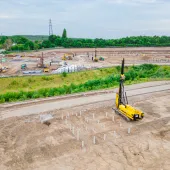Why concrete firms should care about the NAO’s latest warning
When the National Audit Office (NAO) releases a critical report on government policy, it often sounds like a distant issue for the average contractor or supplier. But this month’s analysis of England’s developer contributions system should hit close to home for the concrete sector.
The NAO found that the mechanisms designed to fund roads, utilities, drainage and affordable housing through new developments—namely Section 106 agreements and the Community Infrastructure Levy (CIL)—are failing to deliver. And that failure is directly affecting our ability to get on site and build.
What’s going wrong?
Our full news story on the NAO report sets out the main points: councils are under-resourced, many don’t have up-to-date local plans, and there’s over £8 billion in unspent developer contributions sitting unused. Affordable homes are stalled, infrastructure hasn’t been delivered, and local authorities are being outgunned by developers’ legal teams when it comes to negotiating obligations.
The implications are real for concrete contractors and suppliers. When a project’s road access, drainage or substructure work is delayed because a Section 106 contribution hasn’t been spent—or hasn’t even been agreed—concrete work stalls too. You can’t pour foundations for homes that can’t break ground. You can’t supply slab or kerb units if the access road hasn’t been built.
The importance of “shovel-ready”
Our sector often talks about being “shovel-ready.” But in practice, that readiness depends on more than just materials and manpower—it hinges on local planning teams having the resources, skills and political support to turn developer contributions into real-world infrastructure.
If you're delivering readymix to a new housing estate or installing precast floor units for a school or care home, odds are the site depends on upfront investment from Section 106 or CIL to prepare the ground, lay utilities and build access roads.
When that system breaks down, it delays the entire concrete construction chain—from design and delivery to pour and finish.
What needs to change?
The NAO is urging central government to:
- Build planning capacity in local councils
- Reform the complex and often opaque financial viability process used by developers to reduce obligations
- Encourage greater use of CIL, which is simpler and more transparent
Whether these reforms come quickly enough is another matter. But the construction industry—especially those of us working at the front line of physical delivery—must push for a system that works. If you can’t get on site because a bridleway hasn’t been upgraded, or if concrete collars can’t be cast because drainage hasn’t been installed, then the whole promise of building Britain out of its housing crisis falls flat.
We’ll be keeping a close eye on how these reforms unfold—and what they mean for real-world delivery on concrete jobs nationwide.
If your company has been affected by delayed infrastructure or unspent developer contributions, we’d like to hear from you. Get in touch at [email protected].
Further reading:
📄 NAO: Developer funding system failing to deliver vital infrastructure
📊 Infrastructure Funding Statements – GOV.UK guidance
📘 Section 106 and CIL explained – Planning Portal
Concrete Connect – keeping the UK concrete sector informed, connected, and ready to deliver.







